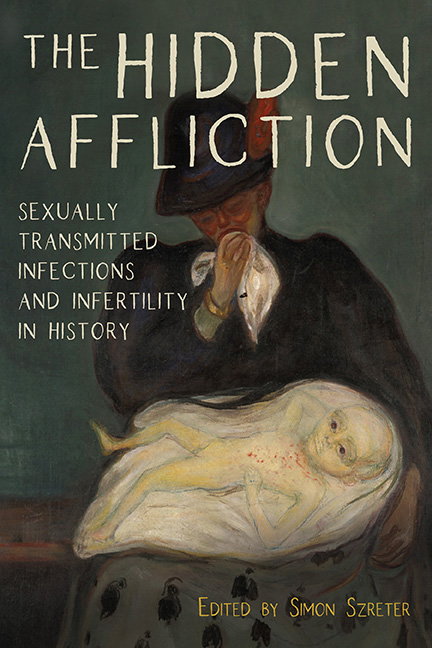Book contents
- Frontmatter
- Contents
- Acknowledgments
- Introduction
- Part One The Hidden Pitfalls in the Early Documentary Record
- 1 (The Wrong Kind of) Gonorrhea in Antiquity
- 2 “Poxt and Clapt Together”: Sexual Misbehavior in Early Modern Cases of Venereal Disease
- Part Two The Biomedical Sciences and the History of the STI Microorganisms
- Part Three Population Decline in the Global South
- Part Four Infertility and the Specter of Venereal Diseases in Modern Europe
- List of Contributors
- Index
2 - “Poxt and Clapt Together”: Sexual Misbehavior in Early Modern Cases of Venereal Disease
from Part One - The Hidden Pitfalls in the Early Documentary Record
Published online by Cambridge University Press: 25 March 2020
- Frontmatter
- Contents
- Acknowledgments
- Introduction
- Part One The Hidden Pitfalls in the Early Documentary Record
- 1 (The Wrong Kind of) Gonorrhea in Antiquity
- 2 “Poxt and Clapt Together”: Sexual Misbehavior in Early Modern Cases of Venereal Disease
- Part Two The Biomedical Sciences and the History of the STI Microorganisms
- Part Three Population Decline in the Global South
- Part Four Infertility and the Specter of Venereal Diseases in Modern Europe
- List of Contributors
- Index
Summary
The connection between infertility and venereal disease was probably widely understood in the early 1700s, though evidence of this is elusive, and it has received little historical attention. The association is clearest in instances of healers who specialized in both curing venereal disease and treating infertility, and a few remedies for the disease doubled as fertility treatments. Venereal scabs, ulcers, and scars were thought to hamper the physical processes involved in procreation. As one book put it quite brusquely, “the Seed does not squirt out with that Jirk as is necessary to keep up its conveyance to the Ovarium of the Woman.” Likewise, the vaginas of infected women could become inflamed or fluxed, thereby inhibiting sexual activity. The disease was also thought to cause infertility in two other ways. First, it could weaken the seed. For instance, when a thirty-year-old man “much given to Venery” in his youth continued acting in lewd ways, “his Genital Parts became very much weakened, and at last Impotent.” Second, venereal cures could lead to infertility by creating “lankness, softness, or withering” of the genitals. A woman who contracted venereal disease from her husband told her doctor that she took treatments for years “by means of which, and the Disease, she believ'd she was rendred Sterill.”
This chapter approaches the link between sex and disease from a different angle, however. Rather than examining how the disease was thought to cause infertility, I analyze how ideas and anxieties about sex shaped clinical encounters. Using medical cases spanning 1675 to 1750, this chapter shows how beliefs and concerns about sexual misbehavior could inform interactions between venereal healers and patients. Such a focus highlights the moral nature of the disease and how sexual anxiety was key to treating and diagnosing it.
In their accounts of medical practice, venereal healers presented themselves as shrewd interpreters of patients’ bodies and souls. They had to be such skilled observers, I suggest, because they did not trust their patients. In the early modern period, patients’ verbal, subjective accounts of illness were crucial to medical practice. Diseases were not viewed as tangible entities that manifested uniformly in all bodies. Rather, they were unique, continually transforming clusters of symptoms that patients and healers interpreted according to individual lifestyles and constitutions.
- Type
- Chapter
- Information
- The Hidden AfflictionSexually Transmitted Infections and Infertility in History, pp. 68 - 90Publisher: Boydell & BrewerPrint publication year: 2019



